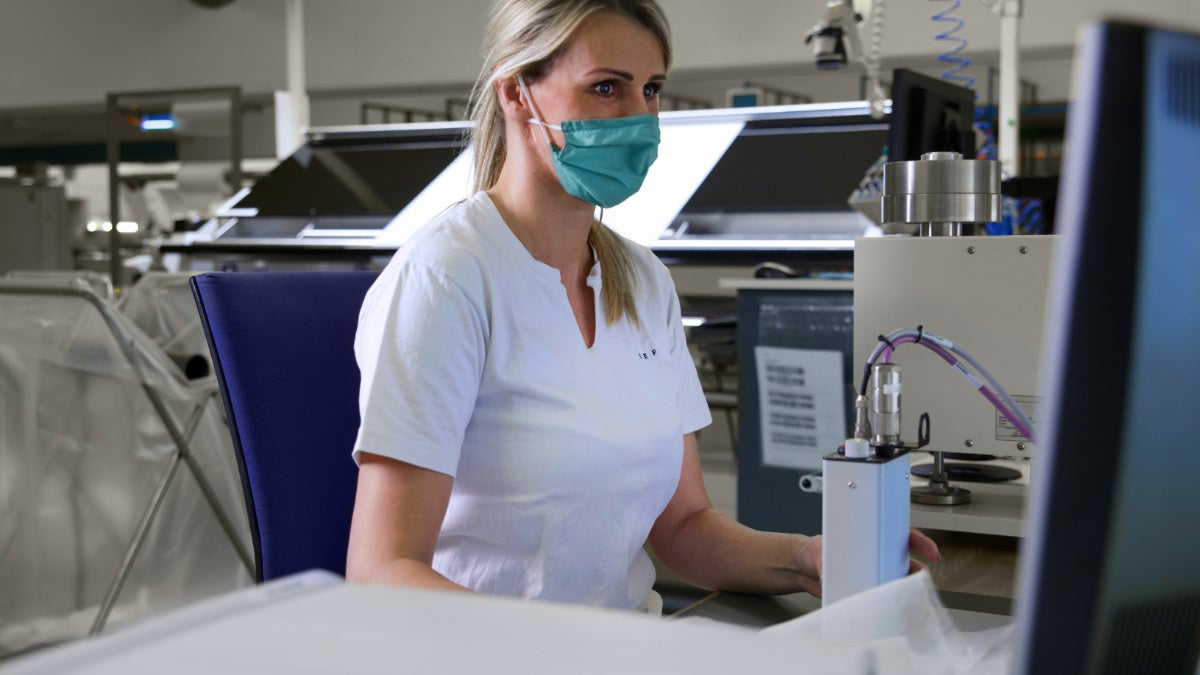
Healthcare fabrics is one of the fastest growing segments of the medical textile industry. In fact, 2020 saw the global medical textiles market size valued at USD 24.70 billion, with forecasts predicting its continued expansion at a CAGR of 4.5% to 2028.
This staggering growth is owing to the increased need for better wound closure devices that feature faster healing times and lower incidences of failure and infection, compounded by a growing demand for better healthcare services and more efficient medical treatments.
Closer examination of the market landscape highlights that the largest share of 2020’s global revenue came from the non-woven segment with a 65% hold, and a prediction for the fastest growth in the forecast period. The non-implantable goods segment, meanwhile, is expected to register a revenue based CAGR of 4.4%, with demand driven by an increasing number of surgeries and subsequently a growing need to protect wounds and stitches from the external environment.
What’s more, newer approaches and innovations in surgical adhesives and sealants continue to grow, with both momentum and market share building.
Many of these developments – polymer-based nanofabrication, is one example – have sought to address the issues typically associated with traditional medical fabrics (such as their inability to prevent bacteria from accessing the wound site, which can lead to infection), while simultaneously providing additional clinical benefits. As the use of nanomaterials in biomedical applications gains widespread adoption, yearly market revenue is expected to increase. This will subsequently break down the primary barriers to take up – cost and scalability – as further research is conducted and development processes are streamlined.
Developments in biocompatibility
One area which has seen significant research and exploration is biocompatible fabrics. Polymeric nanomaterials, for example, have been researched extensively for a wide range of clinical applications, such as in drug delivery systems and tissue-engineering scaffolds, thanks to their biocompatibility and non-reactivity.
In fact, when a material is selected for a medical device, biocompatibility is one of the first factors considered. In a broad sense, biocompatibility is defined as having properties that make a material or a device compatible with the human body. For example, an indwelling catheter that does not trigger blood clotting or another thrombogenic reaction as a result of its contact with the bloodstream is considered to be biocompatible.
According to Piotr Gasiorczyk business development manager at leading manufacturer of precision fabrics Sefar Inc: “Today, biocompatible medical fabric is mostly used for high-precision applications, such as heart surgery. Many of these product advancements come from unique applications or unique customer requests which allow for a wider range of use of medical fabrics.”
Of course, the use of biocompatible fabrics requires careful navigation of certain certification and regulations. As a result, fabric manufacturers must conduct several internal tests (or have them carried out by external laboratories).
Sefar’s MEDIFAB®, for example, is a woven precision fabric based on synthetic yarn and provides all the necessary certificates and evidence for use in the medical sector. The product line is biocompatible and meets the requirements of USP VI. The production processes are monitored according to ISO 13485 to provide safety and minimise customer risk, while the customer benefits from a simpler approval of their products in the medical market, consequently saving them time and money.
Created to comply with the ever-increasing requirements for medical applications, Sefar’s MEDIFAB® provides:
- Biocompatibility according to several parts of ISO 10993 and USP plastic class VI
- ISO 13485 certified quality system
- Precise fabric dimensions
- Unmatched two-dimensional stability
- Homogeneous material and surface properties
- Consistent product quality
- Excellent cross-flow properties
- Non protein binding surface
Its applications include implants, medical devices, blood filtration, security filters into infusion sets, and applications for cell growth. “Medical customers are looking for a solid development partner who provides quality, reliability and innovation as crucial success factors in medical technology,” explains Gasiorczyk. “Our state-of-the-art ISO Class 7 clean room provides us a way to maintain high levels of cleanliness and to convert the fabrics into a more complete part that can be integrated into their medical devices.”
A new era
In the coming years, there will be an ever-growing need for more biocompatible wound healing devices that promote robust patient recovery while preventing the need for expensive interventions to treat infections. Recent innovations will markedly improve the quality of surgical adhesives and sealants, which are important segments already capturing significant shares of the wound care market.
The increasing reliability and versatility of these approaches, as well as the growing need for better alternatives to surgical suturing and stapling, has the potential to usher in a new era of wound care and medical textiles, and Sefar looks set to lead the way.


